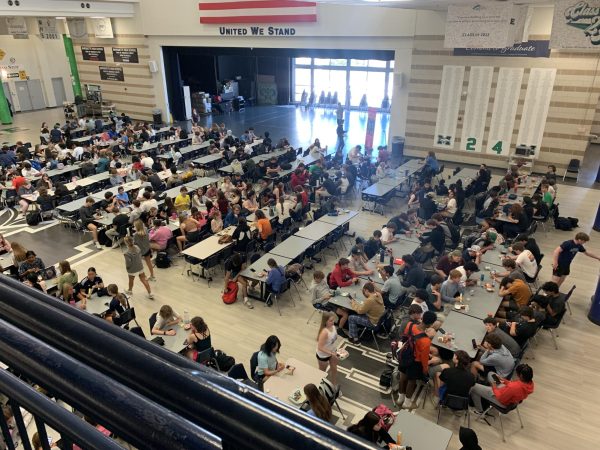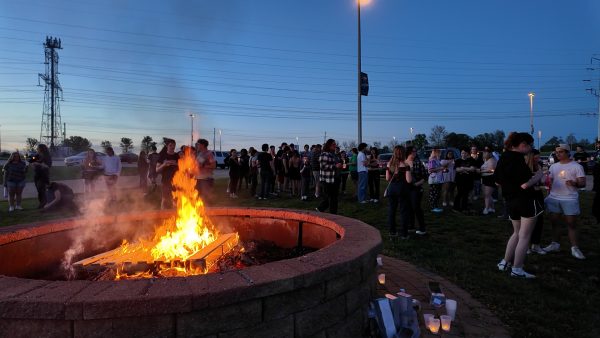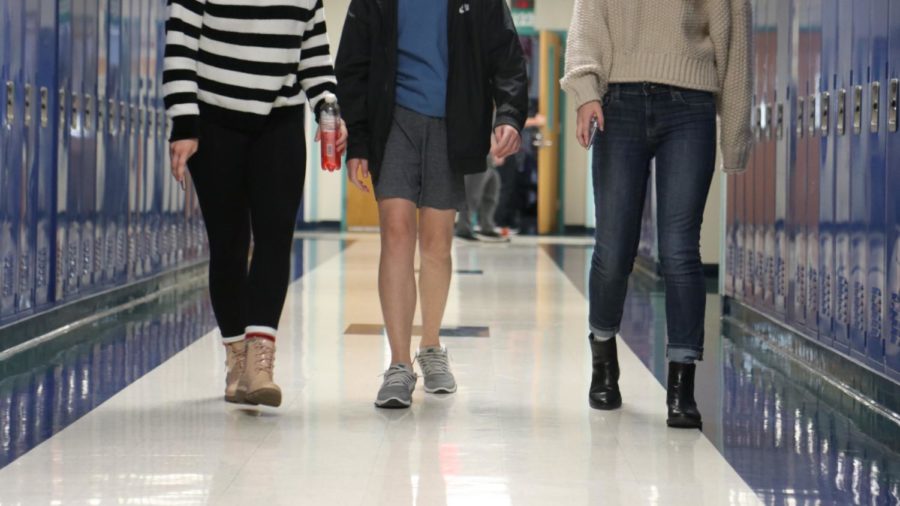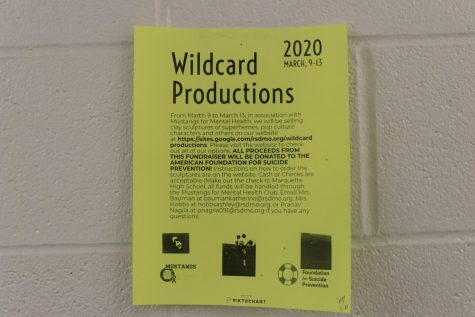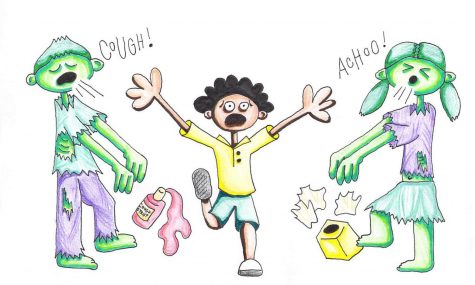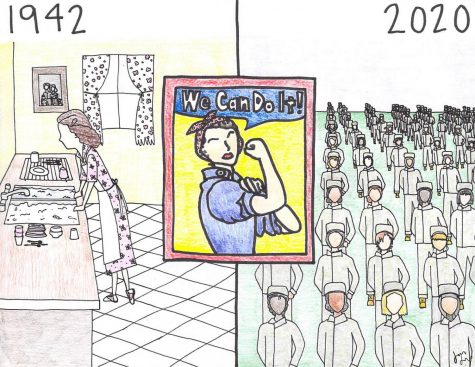Has MHS Reached the Limit?
Media by Tanner Rojewski
Students walking in the MHS halls.
A common sight in the hallways of MHS are the very crowded hallways and stairwells during passing periods of the day.
Many upperclassmen who have to make this journey through the hallways, like Zoe Ellis, theorized that the overcrowded stairwells would die down once underclassmen became more familiar with the school grounds and different routes, but three months into the school year and there seems to be no difference.
“I do feel like the freshmen really don’t know where to go,” Ellis said. “They crowd in large groups, and they really just sort of clump together.”
Ellis explained that it’s not necessarily about where they are, but the 612 of the Freshmen Class.
“I think that even with the addition to classrooms, it’s still overrun,” she said. “It really has become denser since I was a freshman, and you can’t really catch your breath.”
MHS has more than 2,450 students. In the vast hallways, the red zones are the stairwells.
Kenzie Close, art teacher, has a classroom right outside one of the busiest stairwells. She said one of the main reasons for the lack of movement is from distractions in the hallways such as students on their cellphones not paying attention to their surroundings.
“I notice a lot of people looking at their phones, and because of that, their pace is a lot slower,” Close said. “I think people can be a little more mindful when they’re walking.”
She explained other factors such as student routes and the general influx of students may also contribute to the traffic jam in the hallways.
“I think that there are a lot of students in the building and sometimes because of that, it seems like we’re outgrowing the school,” Close said. “But I also think that students could be going different routes.”
Close said an easy way to solve the congestion problems in the hallways is to not congregate in the hallways and to pay attention to surroundings.
Principal Dr. Steve Hankins is aware of the problem.
You can’t really catch your breath.
— Zoe Ellis
“We definitely feel crowded,” he said. “But the problem is, what’s the solution?”
Dr. Hankins explained that solutions such as redrawing district lines so that students from different areas may be transferred to neighboring schools are great, but at the bottom line he doesn’t want to lose any of the staff or students MHS already has.
Dr. Hankins said MHS’ current state is a hazard, and reassured that if it did become a safety issue, changes would be made immediately.
“Our students are amazing,” Dr. Hankins said. “They’re cordial and forgiving. If we had a more cretinous climate I would be a little more worried about it.”
Since its original construction, MHS has developed six building additions to the school. As of now, MHS has a square footage of 346,859 square feet. Dr. Hankins said MHS is running out of footprint to expand and that expanding is an expensive process overall.
Your donation will support the student journalists of Marquette High School. Your contribution will allow us to purchase equipment and cover our annual website hosting costs. You may become a PATRON by making a donation at one of these levels: White/$30, Green/$50, Blue/$100. Patron names will be published in the print newsmagazine, on the website and once per quarter on our social media accounts.

Molly Sillitto, junior, is the Opinions Editor for the Marquette Messenger. This will be her second year on staff. Molly likes to listen to music, go outside...

Tanner Rojewski, senior, is the Production Editor for the Messenger. He is involved in Robotics, National Honor Society, and is an Eagle Scout. He works...



